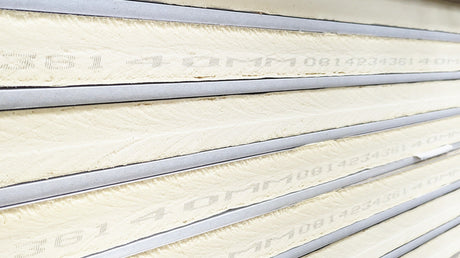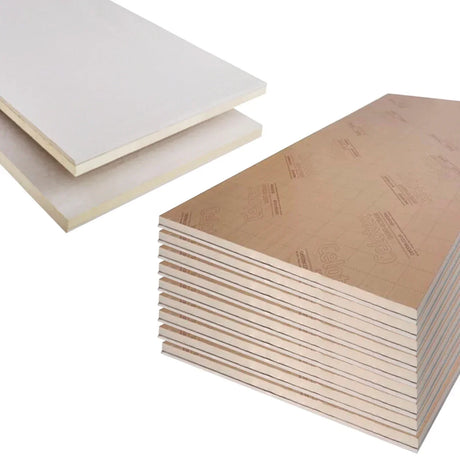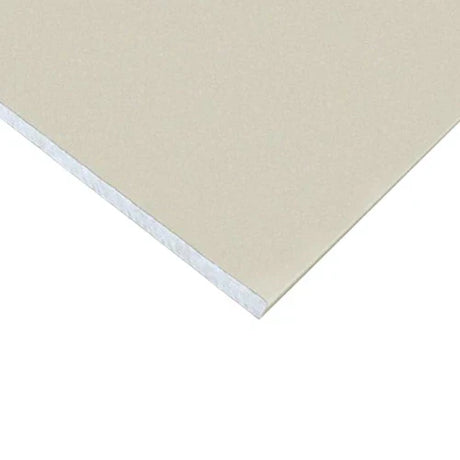Understanding thermal performance has never been more critical for UK builders – here's your comprehensive guide to mastering U-value calculations and achieving Building Regulations compliance.
Why U-Values Are the Foundation of Modern Building Performance
In the rapidly evolving landscape of UK construction, understanding U-values has transformed from a technical curiosity into an essential skill for anyone serious about building performance. Whether you're a seasoned trade professional working on your latest project or a DIY enthusiast tackling a home renovation, mastering U-value calculations will dramatically improve your building's energy efficiency, reduce heating costs, and ensure compliance with increasingly stringent Building Regulations.
At DIY Building Supplies, we've witnessed firsthand how proper understanding of thermal performance can make the difference between a project that merely meets standards and one that delivers exceptional long-term value. Our experience supplying premium insulation materials from trusted brands like Celotex, Knauf, and Isover has shown us that the most successful projects begin with a clear understanding of thermal requirements and how different materials contribute to overall building performance.
The financial implications of getting U-values right extend far beyond initial compliance costs. A well-insulated building with optimised U-values can reduce heating bills by 40-60% compared to poorly insulated structures, whilst simultaneously improving comfort levels and reducing condensation risks. This makes U-value optimisation one of the most valuable investments you can make in any building project, delivering returns that compound over the entire lifespan of the structure.
Understanding U-Values: The Science Made Simple
A U-value measures exactly how effective your building elements are at preventing heat loss, expressed in watts per square metre per degree of temperature difference (W/m²K). Think of it as a thermal report card for your walls, floors, and roofs – the lower the number, the better your insulation performance. This seemingly simple concept forms the cornerstone of energy-efficient construction and directly impacts both your comfort and energy bills.
The beauty of U-values lies in their universality and precision. Unlike vague descriptions such as "well-insulated" or "energy-efficient," U-values provide exact, measurable data that allows for meaningful comparisons between different construction approaches. When you see a wall with a U-value of 0.18 W/m²K, you know precisely how it will perform thermally, regardless of the specific materials or construction method used to achieve that performance.
Understanding U-values becomes particularly crucial when navigating the complexities of UK Building Regulations Part L, which sets mandatory thermal performance standards for all new construction and many renovation projects. These regulations have become progressively more demanding, reflecting our national commitment to reducing carbon emissions and improving building energy efficiency. For professionals and DIY enthusiasts alike, achieving compliance isn't just about meeting minimum standards – it's about creating buildings that perform exceptionally throughout their operational lifespan.
The Building Blocks of U-Value Calculations
Every U-value calculation relies on understanding the thermal properties of individual materials and how they work together as a complete building element. The fundamental principle involves calculating the thermal resistance (R-value) of each layer in your construction, then combining these resistances to determine the overall thermal performance of the complete assembly.
Thermal conductivity, represented by the lambda value (λ), forms the foundation of these calculations. This property, measured in W/mK, tells you how readily a material conducts heat – lower lambda values indicate better insulating properties. For example, PIR insulation boards from manufacturers like Celotex typically have lambda values around 0.022 W/mK, making them exceptionally effective insulators, whilst concrete has a lambda value of approximately 1.7 W/mK, indicating its much lower insulating capability.
The magic happens when you combine thermal conductivity with material thickness to calculate thermal resistance. A 100mm layer of Celotex PIR board provides significantly more thermal resistance than a 50mm layer of the same material, demonstrating why thickness matters just as much as material choice. However, the relationship isn't always straightforward – doubling insulation thickness doesn't necessarily halve your U-value due to the cumulative effects of other building elements and the mathematical relationship between resistance and U-values.
Current UK Building Regulations: Your 2025 Compliance Roadmap
The latest iterations of Building Regulations Part L have established increasingly ambitious thermal performance targets that reflect the UK's commitment to achieving net-zero carbon emissions by 2050. For new residential construction in England, these standards now require roof U-values no higher than 0.11-0.16 W/m²K, wall U-values between 0.18-0.26 W/m²K, and floor U-values ranging from 0.13-0.18 W/m²K. These targets represent a significant tightening compared to previous regulations and demand careful material selection and construction detailing.
Understanding these requirements becomes even more complex when you consider that different building types and renovation scenarios may have varying compliance pathways. Extensions and conversions often follow slightly different criteria, whilst listed buildings and properties in conservation areas may require special consideration that balances thermal performance with heritage preservation requirements. The key lies in engaging with your local authority's building control team early in the planning process to establish exactly which standards apply to your specific project.
What makes these regulations particularly significant is their focus on whole-building performance rather than individual element compliance. This holistic approach means that exceptional performance in one area can potentially compensate for limitations in another, provided the overall building meets energy efficiency targets. This flexibility creates opportunities for innovative solutions, particularly when working with existing buildings where achieving ideal U-values in every element may be challenging or cost-prohibitive.
Optimising Wall Thermal Performance: Materials and Methods
Achieving excellent wall U-values requires a systematic approach that considers both material selection and construction methodology. PIR insulation boards from manufacturers like Celotex, Ecotherm, and Kingspan represent the gold standard for wall insulation, offering exceptional thermal performance in relatively thin sections. A typical 100mm Celotex PIR board can provide thermal resistance values around 4.5 m²K/W, forming the backbone of high-performance wall constructions.
The integration of insulated plasterboard systems creates additional opportunities for thermal enhancement whilst simplifying installation processes. Products like Celotex PL4000 combine structural boarding with integral insulation, providing both thermal performance and a ready-to-finish internal surface. This approach proves particularly valuable in renovation projects where internal space is at a premium, allowing significant thermal improvements without major structural modifications.
Vapour control layers and airtightness details play crucial supporting roles in wall thermal performance, preventing moisture-related issues that could compromise insulation effectiveness. Modern membrane systems from manufacturers like Klober and Pro Clima provide sophisticated solutions that manage moisture movement whilst maintaining thermal integrity. The careful detailing of these systems, particularly at junctions and penetrations, often determines whether theoretical U-value calculations translate into real-world performance benefits.
Contemporary wall construction increasingly embraces continuous insulation strategies that minimise thermal bridging through structural elements. External wall insulation systems, whilst requiring careful planning permission consideration, can achieve exceptional U-values whilst preserving internal space. These approaches often prove most effective when specified as complete systems from single manufacturers, ensuring compatibility between all components and comprehensive warranty coverage.
Roof Insulation Excellence: From Traditional Lofts to Modern Systems
Roof insulation presents unique opportunities for achieving exceptional U-values, largely because the roof void often provides generous space for thick insulation layers. Traditional approaches using mineral wool products like Knauf Earthwool or Isover APR 1200 can achieve excellent performance when installed to adequate thicknesses – typically 270-300mm to meet current Building Regulations requirements.
PIR board solutions offer alternative approaches that prove particularly valuable in pitched roof applications where maintaining headroom is crucial. Above-rafter insulation systems using products like Celotex FR5000 can achieve remarkable thermal performance whilst eliminating thermal bridging through structural timbers. These systems require careful structural consideration but deliver consistent thermal performance that's difficult to achieve with between-rafter approaches alone.
Multifoil insulation products provide supplementary benefits, particularly in managing radiant heat transfer during summer months. Whilst these products shouldn't be relied upon as primary insulation solutions, they offer valuable performance enhancements when correctly integrated with bulk insulation materials. The key lies in understanding that multifoils work through different mechanisms than traditional insulation materials and require specific installation details to achieve their performance potential.
Breathable membrane selection becomes particularly critical in roof applications, where managing moisture movement whilst maintaining thermal performance requires careful material specification. Modern membranes like Klober Permo Forte provide high levels of vapour permeability whilst offering excellent weatherproofing during construction phases. The integration of these membranes with insulation systems and structural elements requires attention to detail that's often underestimated in initial project planning.
Floor Insulation Strategies: Building from the Ground Up
Floor insulation presents distinct challenges that require tailored approaches depending on construction type and ground conditions. Solid concrete floors typically benefit from rigid insulation boards installed either above or below the structural slab, with each approach offering specific advantages. Above-slab installation using PIR boards like Celotex GA4000 provides excellent thermal performance whilst simplifying installation, though it does raise floor levels slightly.
Suspended timber floors offer different opportunities for thermal enhancement, typically through insulation boards or batts installed between floor joists. The selection between rigid boards and flexible batts often depends on joist spacing, access considerations, and performance requirements. Rigid PIR boards provide superior thermal performance per unit thickness but require precise cutting and fitting, whilst mineral wool batts offer easier installation but greater thickness requirements.
Thermal bridging through floor perimeters represents a common weak point that can significantly compromise overall floor U-values. Careful detailing using thermal break materials and continuous insulation strategies helps maintain thermal performance whilst preventing condensation risks. Edge insulation, often overlooked in initial planning, frequently determines whether calculated U-values translate into real-world performance benefits.
Under-floor heating systems add another dimension to floor insulation considerations, requiring careful balance between thermal resistance and heat transfer efficiency. Specialist insulation products designed for under-floor heating applications often incorporate reflective layers that direct heat upward whilst maintaining overall thermal performance of the floor assembly.
Practical U-Value Calculation: A Worked Example
Understanding U-value calculations becomes much clearer when working through a practical example that demonstrates the step-by-step process. Consider a typical wall construction incorporating 100mm of Celotex PIR insulation board, which has a thermal conductivity (λ) of 0.022 W/mK. The thermal resistance of this insulation layer equals the thickness divided by thermal conductivity: 0.1m ÷ 0.022 W/mK = 4.55 m²K/W.
However, insulation boards rarely work in isolation – they form part of complete building elements that include multiple layers, each contributing to overall thermal resistance. A complete wall assembly might include external render, blockwork, the PIR insulation, and internal plasterboard, each with their own thermal properties. Additionally, internal and external surface resistances contribute approximately 0.13 and 0.04 m²K/W respectively, representing the thermal resistance of still air layers adjacent to building surfaces.
When all thermal resistances are combined – let's assume a total of 4.76 m²K/W for our example wall – the U-value calculation becomes straightforward: U = 1 ÷ Total R = 1 ÷ 4.76 = 0.21 W/m²K. This result comfortably meets current Building Regulations requirements for wall elements, demonstrating how proper insulation specification can achieve compliance whilst providing excellent long-term thermal performance.
It's worth noting that real-world U-value calculations often involve more complex considerations, including thermal bridging effects, air gaps, and interface details that can significantly impact overall performance. Professional thermal modelling software and manufacturer-provided calculation tools offer more sophisticated analysis capabilities for complex constructions or where precise compliance margins are critical.
Essential Tools and Resources for U-Value Success
Successfully implementing U-value calculations requires access to reliable data sources and calculation tools that ensure accuracy and compliance. Major insulation manufacturers like Celotex, Kingspan, and Knauf provide comprehensive online U-value calculators that incorporate their products' exact thermal properties and account for common construction details. These tools prove invaluable for preliminary assessments and specification development.
Professional thermal modelling software offers more sophisticated capabilities for complex projects or where thermal bridging analysis is required. Programs like THERM and WUFI provide detailed thermal analysis capabilities, though they require significant expertise to use effectively. For most DIY and trade applications, manufacturer calculators combined with building control guidance provide adequate accuracy for compliance and performance optimisation.
Product datasheets form the foundation of accurate U-value calculations, providing the precise thermal conductivity values needed for reliable analysis. At DIY Building Supplies, we ensure all our insulation products include comprehensive technical data, enabling our customers to make informed decisions about thermal performance. Understanding how to read and interpret these datasheets becomes crucial for anyone serious about optimising building thermal performance.
Building control officers and energy assessors represent valuable resources for guidance on complex thermal calculations and compliance strategies. Early engagement with these professionals can prevent costly mistakes and identify opportunities for performance optimisation that might not be apparent from material specifications alone. Their experience with local conditions and common construction challenges often proves invaluable in achieving practical solutions that meet both regulatory requirements and performance expectations.
Maximising Your Investment: Long-Term Benefits of Superior U-Values
The financial benefits of achieving excellent U-values extend far beyond initial Building Regulations compliance, delivering substantial savings throughout the building's operational lifespan. A well-insulated home with optimised U-values typically reduces heating costs by 40-60% compared to poorly insulated structures, creating savings that compound year after year. These energy savings often recover the additional cost of premium insulation materials within 5-7 years, whilst continuing to deliver benefits for decades thereafter.
Comfort improvements represent another significant benefit that's often underestimated in initial project planning. Buildings with excellent U-values maintain more consistent internal temperatures, eliminate cold spots, and reduce draughts that can make spaces uncomfortable even when adequately heated. This thermal stability proves particularly valuable during extreme weather conditions, maintaining comfortable conditions with lower energy consumption.
Property values increasingly reflect thermal performance, with energy-efficient buildings commanding premium prices in competitive markets. EPC ratings directly correlate with U-value performance, and properties achieving high energy efficiency ratings often sell faster and for higher prices than comparable properties with poor thermal performance. This trend seems likely to accelerate as energy costs continue rising and environmental awareness increases among property buyers.
Future-proofing considerations make superior U-values even more valuable as an investment strategy. With Building Regulations continuing to tighten and energy costs likely to increase over time, buildings that already achieve exceptional thermal performance will be well-positioned for future requirements. This forward-thinking approach can prevent costly retrofit requirements and ensure continued compliance with evolving standards.
Your Path to Thermal Excellence Starts Here
Understanding and implementing excellent U-value performance has never been more important for UK builders, whether you're a trade professional managing multiple projects or a DIY enthusiast working on your own home. The combination of tightening Building Regulations, rising energy costs, and increased environmental awareness makes thermal performance optimisation a crucial skill that delivers both immediate compliance and long-term value.
At DIY Building Supplies, we're committed to supporting your success with comprehensive product ranges from trusted manufacturers like Celotex, Knauf, and Isover, combined with expert technical guidance that helps translate theoretical knowledge into practical results. Our team understands the challenges of achieving excellent U-values within real-world budget and space constraints, and we're here to help you navigate these challenges effectively.
The journey towards thermal excellence begins with understanding the principles outlined in this guide, but success comes through careful material selection, attention to installation details, and ongoing commitment to best practices. Whether you're planning a small extension or a complete new build, the investment in superior U-value performance will deliver benefits that last for decades, making it one of the most valuable decisions you can make for any building project.
Ready to Achieve Outstanding U-Value Performance?
Transform your project's thermal performance with premium insulation materials from the UK's most trusted suppliers. Browse our comprehensive range of PIR boards, mineral wool insulation, breathable membranes, and insulated plasterboard systems from industry-leading manufacturers.
Visit DIYBuildingSupplies.co.uk today and discover how our expert team can help you achieve exceptional U-values whilst maintaining budget control and project timelines. Need technical guidance? Our specialists are ready to provide personalised advice for your specific project requirements.
📞 Contact our technical team for U-value calculations, product specifications, and installation guidance that ensures your project achieves both compliance and exceptional long-term performance.
DIY Building Supplies – Your trusted partner for high-performance insulation and building materials across the UK. Based in Nottingham, delivering excellence nationwide.









